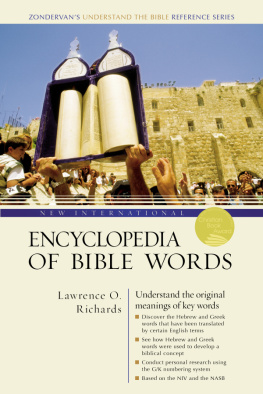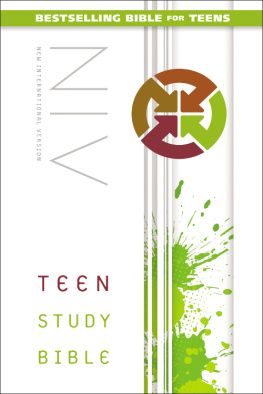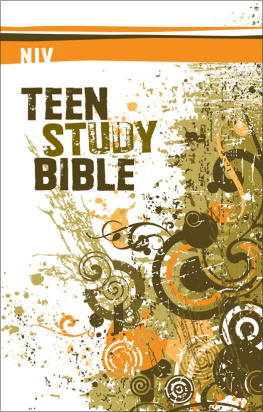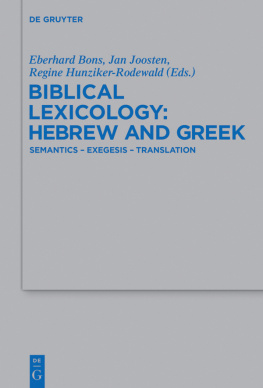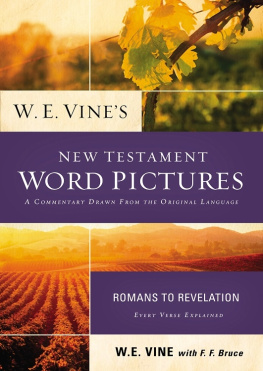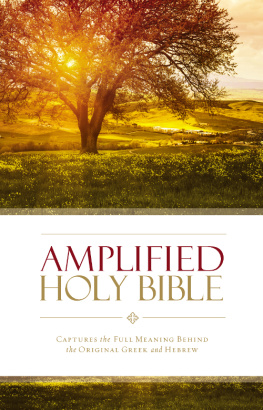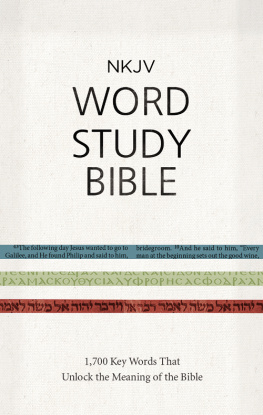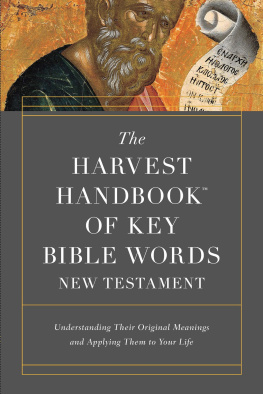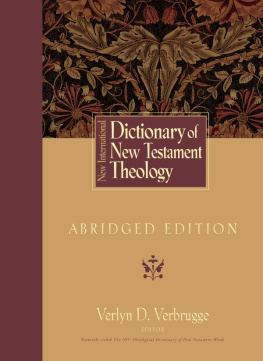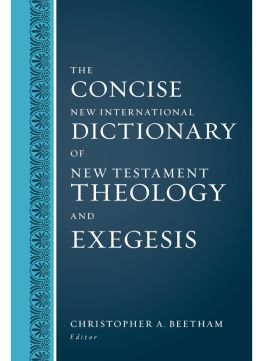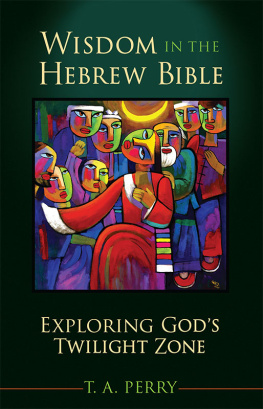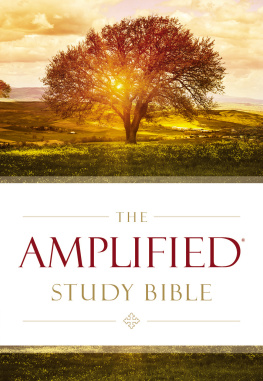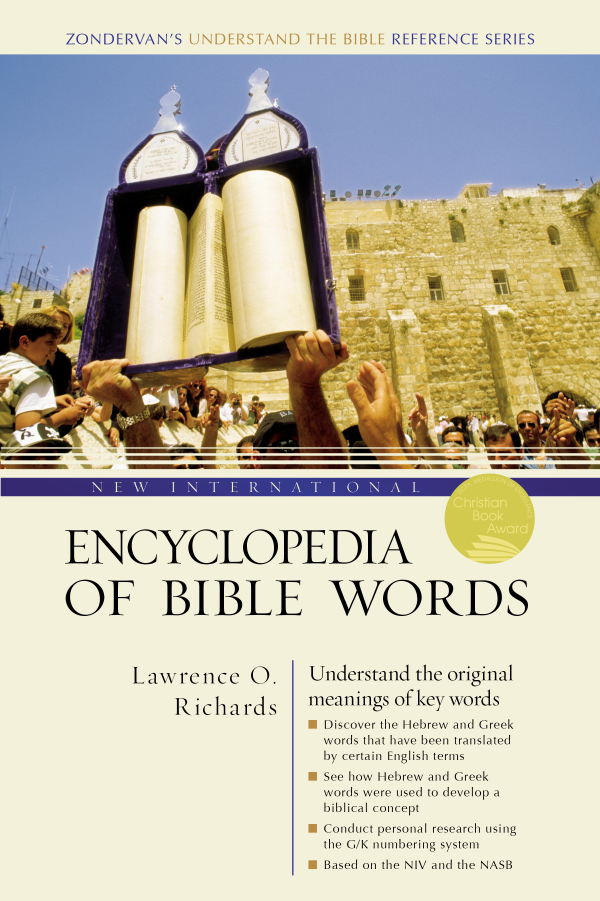
The New International Encyclopedia of Bible Words
Lawrence O. Richards

ZONDERVAN
New International Encyclopedia of Bible Words
Copyright 1985, 1991 by Zondervan
Formerly published under the title Zondervan Expository Dictionary of Bible Words
Requests for information should be addressed to:
Zondervan, 3900 Sparks Dr. SE, Grand Rapids, MI 49546
ePub Edition July 2016: 978-0-310-53001-5
Library of Congress Cataloging-in-Publication Data
Richards, Larry, 1931
[Expository dictionary of Bible words]
New international encyclopedia of Bible words / Lawrence O. Richards.
p. cm.
Originally published : Expository dictionary of Bible words. Grand Rapids, Mich. : Regency Reference Library, 1985
Includes indexes.
ISBN 978-0-310-22912-4 (hardcover)
I. Bible Dictionaries. 2. English language Dictionaries Hebrew. 3. English language Dictionaries Greek, Biblical.
I. Title
BS440.R525 1998
220.3dc21 9851045
All scripture quotations, unless otherwise noted, are taken from The Holy Bible, New International Version. NIV. Copyright 1973, 1978, 1984 by Biblica, Inc. Used by permission. All rights reserved.
Scripture quotations marked NASB are from the New American Standard Bible, copyright 1960, 1962, 1963, 1968, 1971, 1972, 1973, 1975, 1977 by The Lockman Foundation.
Any Internet addresses (websites, blogs, etc.) and telephone numbers in this book are offered as a resource to you. These are not intended in any way to be or imply an endorsement by Zondervan, nor does Zondervan vouch for the content of these sites and numbers for the life of this book.
All rights reserved. No part of this publication may be reproduced, stored in a retrieval system, or transmitted in any form or by any means electronic, mechanical, photocopy, recording, or any other except for brief quotations in printed reviews, without the prior permission of the publisher.
About the Author
Lawrence O. Richards earned a Th.M. from Dallas Theological Seminary and a Ph.D. from Northwestern University. He has written commentaries on every book of the Bible and has taught theology and Bible at Wheaton Graduate School, Illinois. He lives in Hudson, Florida.
Contents
The Bible is and remains God's Word to us, accessible in our own language. The original Hebrew and Greek texts have been translated into hundreds of different languages and into many different English versions. The translators of the Bible have attempted to express as clearly as possible the meaning of the original languages so that contemporary readers may understand the divine message.
It is important that we understand God's message. We live in a society cluttered by many visions of reality. Competing views of truth, of values, and of life's meaning all struggle for our allegiance. But in Scripture we can find an unclouded vision of reality, communicated to us by God Himself. In Scripture we can find the truth, and as we live out the truth we can know freedom. God's Word speaks to transform our perspective on reality, to reshape our attitudes and values, and to create in us a vital, new way of life.
The multiplication of versions has given us excellent translations that accurately capture the original message. But there are still problems for the typical reader of Scripture. Our problems are not with the versions so much as with ourselves. These problems can be summed up in the fact that when we read the Bible, we bring to it our own notions about the words used in Scripture. Rather than letting Scripture reshape our ideas, all too often our ideas are imposed on Scripture. When we read a word like "hope" or "judge" in the Bible, we frequently fail to read it with the Bible's own meaning. Instead, we read it with meanings shaped by our society and our personal experiences. Instead of being reshaped by the Bible's message, we ourselves reshape that message by imposing our meanings on it.
It is very important, then, that the Bible student read the Bible with an awareness of what Bible terms mean, as they are used in the Bible. This statement crystallizes the purpose of this Expository Dictionary of Bible Words. This book explores for the English reader the meaning of many important words as they are used in English versions of the Scriptures.
Two things are particularly important if we are to determine the meaning of Bible words. First, we must go back to the original languages to discover the Hebrew and Greek words that have been translated by certain English terms. This gives us the basic meaning of Bible words. But this is not enough. We must go beyond the usage of these words in the Hebrew and Greek culture and see how these words are used to develop or express a biblical concept. Often the use of a word in Scripture infuses it with new meaning. So in this Expository Dictionary, after the Hebrew and Greek words that underlie English terms are discussed, there is a discussion on how the original words are used in Scripture to build a distinctive biblical concept.
Because there are so many different versions of the Bible in English, it is necessary to narrow our focus; we will consider the two versions that are used most frequently in Bible study. These are the NIV and the NASB.
The NIV is especially acceptable to Evangelicals. This translation was undertaken by over a hundred scholars from many countries and various denominations. All of them were conservative in their commitment to the full authority and trustworthiness of Scripture as God's Word. The result of their years of work is an attractive, readable, and clear expression in contemporary English of the thought of the original Hebrew and Greek writings.
Translators face a number of problems. Many of these occur because single words in any language have more than single meanings. It is the task of Bible translators, therefore, to study the way a Hebrew or Greek term is used in particular sentences and to determine the shade of meaning intended in each context. Thus different English words or phrases are used to translate a single original term. Conversely, the same English word may be used to translate several different Hebrew or Greek terms.
None of the English versions provides a word-for-word translation, with the same English word always being used to translate the same Hebrew or Greek word. Instead, in varying degrees translators adopted a principle called dynamic equivalence. That is, they have attempted to ascertain the meaning (or connotation) of the word or phrase in the source language and to express that meaning in the receptor language. The more the translators of a given version relied on the use of dynamic equivalence, the more difficulty we can expect in tracing concepts from English back to specific Hebrew or Greek words.
How have the translators of different versions approached their task? The translators of the ASV attempted to translate word for word as much as possible. Ken Taylor's Living Bible, on the other hand, is a very loose paraphrase, shaped often by the translator's own interpretations. The NASB tends toward the approach of the ASV. The RSV and NIV fall between these extremes, though the translators of the NIV were more ready to seek dynamic equivalents than were the RSV translators.
The difference in approach to translation between NASB and NIV translators is partly responsible for the different treatment given the two versions in the book. More attention is given to the NIV because its translations are more complex. Also, at this writing there is an exhaustive NASB concordance that traces each English word to the original Hebrew or Greek. This kind of tool is not presently available for the NIV; therefore more data must be provided here for NIV readers.
Next page
